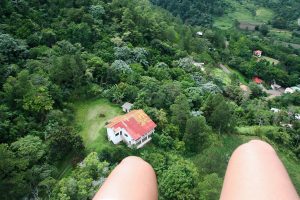
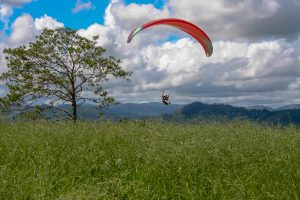 I’m standing at the edge of a mountain, taking in the gorgeous city sprawled below me. I hear the commands “Run, run!” The body instinctively resists but I take a leap of faith and go. I’m up in the air before I even know it, the parachute lifting me up and away. And just like that I’m paragliding in Jarabacoa, Dominican Republic.
I’m standing at the edge of a mountain, taking in the gorgeous city sprawled below me. I hear the commands “Run, run!” The body instinctively resists but I take a leap of faith and go. I’m up in the air before I even know it, the parachute lifting me up and away. And just like that I’m paragliding in Jarabacoa, Dominican Republic.
The name Dominican Republic more often than not stirs up images of a blue green Caribbean sea, and miles and miles of sun-drenched, white-sand beaches. But travel further inland away from the coast and the country reveals a surprising taste for adventure in the central mountain regions of Jarabacoa (Land of Waters) and Constanza, commonly referred to as the Dominican Alps due to their high elevation (525m above sea level).
With a population of 29,984, Jarabacoa is known as The Endless Spring City due to its tropical rainforest climate. With warm days and mild nights in summer and cooler nights in winter, it’s the ideal place for adventure and ecotourism. So it only makes sense then that we start our first morning of the trip with a drive up a mountain to take in the spectacular view of this little city. From the sky. That’s right, I’m talking Paragliding or Parapente as its known in Spanish.
Now standing at the edge of a mountain taking in a view is one thing. Running down one hoping the parachute will carry you off is an entirely different thing. Call me strange but willingly doing this just seems like a really really bad idea. I must look terrified, for Tony, who founded the paragliding school “Flying Tony” in 2006 and with whom we are going to be flying with today, immediately assures me that this sport is perfect for people like me because it is totally safe and all I have to do is trust his group of pilots who are flying with us. And while my mind keeps asking what if you fall, I retort back – but what if you did fly? The verdict? It is simply amazing and the closest I have ever come to feeling like a bird.
Gliding through the air, you get a bird’s eye view of pretty houses dotting the mountainside (some with swimming pools), fields of guava trees, a windy road that resembles a snake and signs of everyday life in a construction site. I close my eyes for a moment, feeling liberated and unencumbered, until the glider dips right and then left sharply and I’m sure my heart is falling out. It turns out we are just about to land. I have survived my first adventure in Jarabacoa!
That afternoon we head back to our lovely Airbnb at the Jarabacoa Mountain Hostel. I know the word hostel might mislead some of you but don’t be fooled. I couldn’t believe this was an Airbnb! The hostel has two units, one that has a modern feel and the other a bit more rustic cabin vibe. Both units have plenty of bedrooms, their own living rooms/kitchen space as well as beautiful outdoor patios to relax and unwind in. The bedrooms are spacious with spectacular bathrooms (with soaking tubs!) and some of the rooms come with balconies that provide a lovely view of nature. An added bonus is the dogs and a tiny kitten we quickly made friends with that kept us company in the evenings out in the patio. Not far from the hostel is the town, about a 5 minute walking distance and makes for a great evening stroll if you want a taste of local cuisine, culture and scenery.
The locals are friendly and the children aren’t opposed to posing for photographs. We get lost one evening and not knowing Spanish, other than the customary “ola”, we resort to old fashioned sign language in an attempt to navigate ourselves back to town. We practice our wildly uncoordinated hand gesture skills on a young boy who then calls his friend who seems to understand us and insists on walking us to town. I am touched by this gesture. Walking with him we glean he works at a hotel down the street and plays soccer in the evenings. We bid him goodbye as we reach the center of town and try to give him some money for his help. He refuses and speeds away in his friend’s scooter that miraculously shows up around the corner.
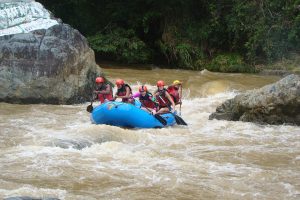 After a good night’s rest, we are ready to truly experience the Land of Waters. The area is home to three rivers flowing nearby and we decide to explore the Yaque del Norte river, made popular because of its rapids. You know what this means right? White-water rafting at its best! These rapids could be class 2, or between 3 and 4 depending on the water level. This morning they turn out to be between class 3 and 4 we are told and we warily look at one another as we climb onto our rafts, making sure to pay attention to the instructions. The ride starts out easy and nice, allowing you a few moments to gaze around at the lush greenery as you gently float down the river. Before long, we are plunging through rapids with creative names such as “Tyson rapids” with a 3.6m/12 ft vertical drop which is exhilarating. No one really falls out on our raft and we have a great time laughing and screaming our way through the rapids.
After a good night’s rest, we are ready to truly experience the Land of Waters. The area is home to three rivers flowing nearby and we decide to explore the Yaque del Norte river, made popular because of its rapids. You know what this means right? White-water rafting at its best! These rapids could be class 2, or between 3 and 4 depending on the water level. This morning they turn out to be between class 3 and 4 we are told and we warily look at one another as we climb onto our rafts, making sure to pay attention to the instructions. The ride starts out easy and nice, allowing you a few moments to gaze around at the lush greenery as you gently float down the river. Before long, we are plunging through rapids with creative names such as “Tyson rapids” with a 3.6m/12 ft vertical drop which is exhilarating. No one really falls out on our raft and we have a great time laughing and screaming our way through the rapids.
If you’re not into the water sports or you aren’t feeling quite up to to jumping off a mountain, don’t miss trekking the highest peak in the Caribbean. Jarabacoa is the main gateway to the mountains of the Central Cordillera: Pico Duarte, La Pelona and La Rusilla. They are so tall, that they are known as the Dominican Alps. You’ll need at the very least two full days for Pico Duarte (elevation 3,402m) and the easiest route is to take the one that departs from La Ciénaga or Mata Grande, through the entrance of Parque Bermúdez, due to the cooler climate and the several river sources that run through it. Don’t forget your camera, there are plenty of photo opps! We opt for a shorter 10 mile hike so we start early around 4:30am to drive up to the national park, park our car, and begin our hike. The cooler weather up here is a welcome respite in the humidity. There are some steep sections, but carry plenty of water, juices and some fruits to keep you hydrated. Alternatively, you can also catch a ride on a donkey if you wish to take a break!
This hike prepares us for the next day’s series of smaller hikes – the first one a quick easy breezy 15 minute downhill through sometimes slippery patches of ground (if it has rained) that opens up into the stunning scenery that is the Jimenoa waterfalls. Not only is it pretty but it also shares a special status with the movie Jurassic Park as the opening scene was shot here at the waterfalls. Beware, the path down is quite sweat-inducing on the very steep way back up and can easily take up to half hour.
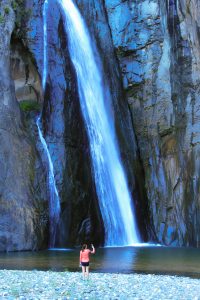
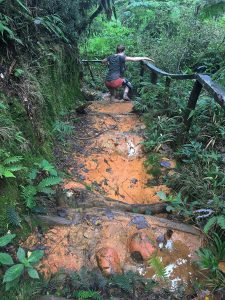 Another longer but equally rewarding hike is within the Ebano Verde Science Reserve. This is a fascinating place of research for scientists to understand more about the native plants found throughout the country. The Reserve has over 600 species of plants and flowers and over 100 kinds of birds visible to you depending on the season. We choose one of the several hiking trails on the Reserve that culminates in a pool of waterfalls. I catch my breath when I enter the water, the cold is bone-chilling but after a few minutes, is a welcome respite from the humidity that is characteristic of this region.
Another longer but equally rewarding hike is within the Ebano Verde Science Reserve. This is a fascinating place of research for scientists to understand more about the native plants found throughout the country. The Reserve has over 600 species of plants and flowers and over 100 kinds of birds visible to you depending on the season. We choose one of the several hiking trails on the Reserve that culminates in a pool of waterfalls. I catch my breath when I enter the water, the cold is bone-chilling but after a few minutes, is a welcome respite from the humidity that is characteristic of this region.
I find that leaving Jarabacoa is hard. I wouldn’t mind staying a few more days. But it’s time to move on to our next adventure, although not before experiencing coffee in the Dominican Republic. After all coffee production is based mainly in these mountain regions, with the major coffee variety known as Arabica (mild). Robusta is also grown but in smaller amounts and is consumed locally. Today we are taking a tour of Mr. Belarminio’s coffee company, which was started in 1943 by Belarminio Ramirez. Dedicated to the cultivation of coffee, the company owns 350 hectares of coffee production located in the mountains of the central range. The tour is educational and you can see each of the processes, starting from germination of grain to the final aromatic taste of the coffee. The company also has a small on-site shop where you can buy the various kinds of coffee for home if you are a coffee afficianado!
Sad to leave Jarabacoa, we embark on a short road journey to the nearby town of Constanza. The road trip is absolutely breathtaking through the mountains. Keep an eye out for trucks transporting all kinds of vegetables; I even spot a bike carrying little chickens! Roadside stalls such as the one below beg the traveler to pull over and have a taste of the succulent pork and dipping sauce. Fruit stalls are also scattered throughout the road, providing wonderful rest stops to load up on exotic, tropical delicacies.
Constanza is a much smaller town than Jarabacoa, and reminds me of a hill station. Pulling up to the Hotel Alto Cerro, located on slightly elevated ground with a stunning view of the Constanza valley, I am already in love. The view from the balcony of my room is sublime. I highly recommend this hotel for the location, the views, the lovely restaurant and the service. In the evenings, sitting in the balcony, I hear faint sounds of a car honking mingling with the melancholic beats of the Bachata wafting through the cool air. It’s a sound I am not likely to forget soon.
We wake up the next day to the sound of roosters crowing and a magnificent sight of the thick mist hovering over the valley. It is the perfect day to cycle the countryside. Family Constanza cycling trail bike allows access to different plantation crops grown in the area and is a lovely way to explore the agriculture – after all this is the capital of industrialized agriculture. We set off on 7-speed touring bikes that come with baskets and spend the morning cycling through little villages, meeting locals who eagerly wave to us, and learning about the crops grown in this region. This easily turns out to be one of my favorite days spent in Constanza.
If Jarabacoa boasts the Jose Armando Bermudez National Park and the Pico Duarte trek, Constanza retorts back with the magnificent Valle Nuevo National Park. I learn it’s the highest alpine forest in the Caribbean, and is also referred to as “The Mother of the Waters” because over 400 rivers are born from its fertile soils. If you truly want to get off the map, spend a night at the Villa Pajon – there is no internet, no electricity, no phone service. Can you handle it? The ride up to the national park in a small truck, covered on top but open at the sides, is a bone-jarring, adventurous ride thanks to the road conditions. You’ll see all sorts of interesting vegetation, including strawberry fields, and the cooler temperature is a pleasure away from the humidity of the city. As you approach the park, behold the small pyramids – four of them ordered by the president Rafael Leonidas Trujillo to be built in the middle of the island and is supposed to mark the exact point that divides the island of Santo Domingo in half. Plenty of locals now camp here with tents to get in touch with nature and embrace the remoteness. A short distance away we see a monument that marks the places where the Colonel Francisco Alberto Caamaño was killed during the 12 year rule of President Balaguer. If you have time, spend a night at Villa Pajon or camp to truly experience this park.
Jarabacoa may represent the wilder side of the Dominican Republic, but Constanza represents the heart of the country. To really experience Constanza, walk into town on a Friday or Saturday night and slip into any of the bars to listen to the beats of the Bachata or dance to the lively Merengue. A visit to both towns will give you an immersive and experiential insight into the Dominican Republic, its people, culture and history. A few days spent in the lovely beach resorts of Punta Cana and Semana will round off your trip and leaving you feeling content and fulfilled yet aching to return to this lovely island country. There’s a saying here in the mountains, “God is everywhere – but he lives in Constanza.” Now I know why.
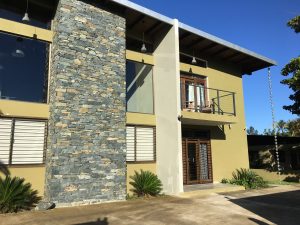
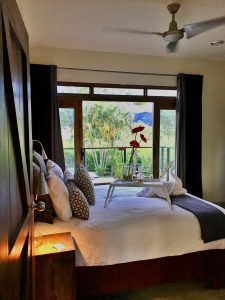
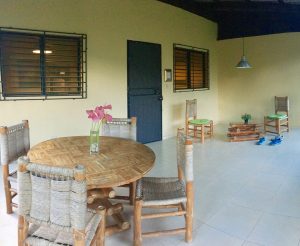
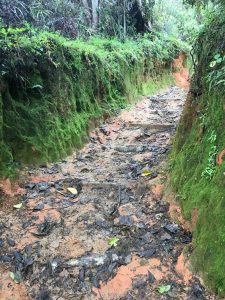
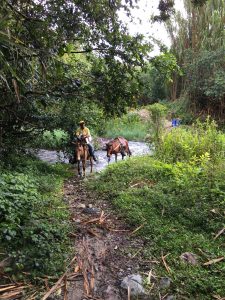

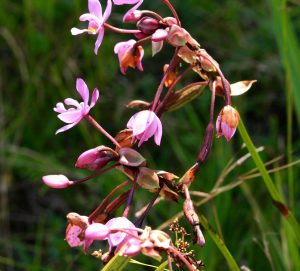
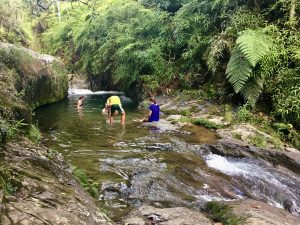


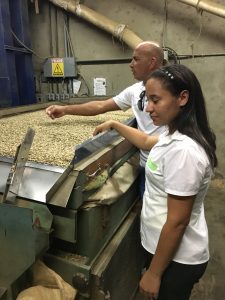



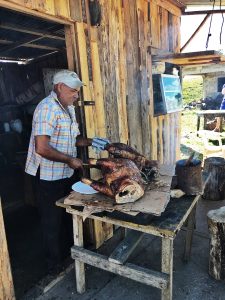


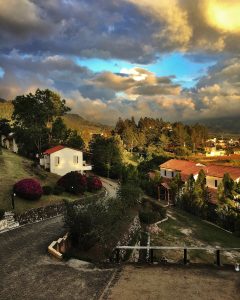
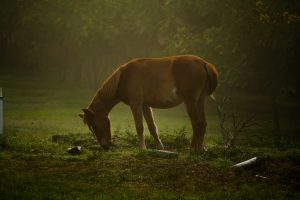

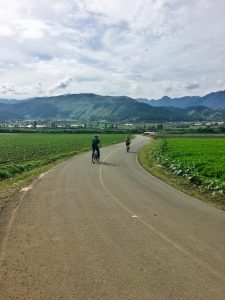
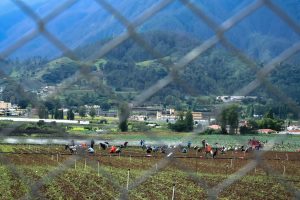


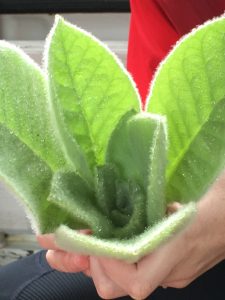
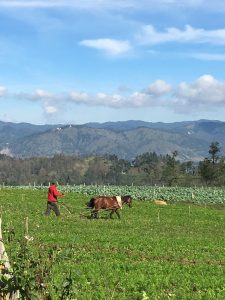
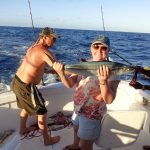

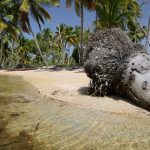

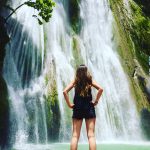
I love Jarabacoa!!!!